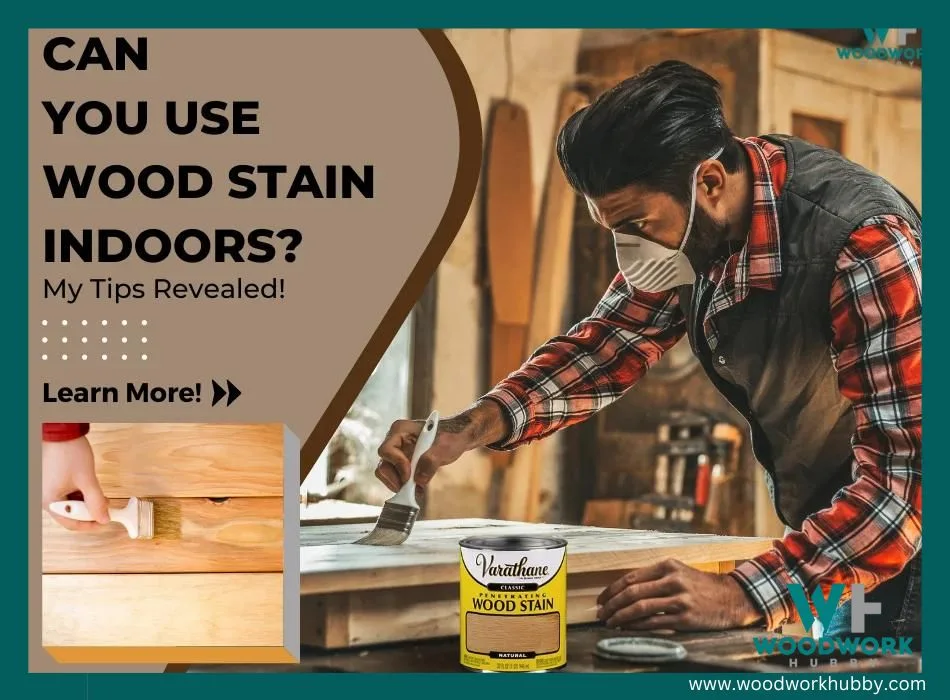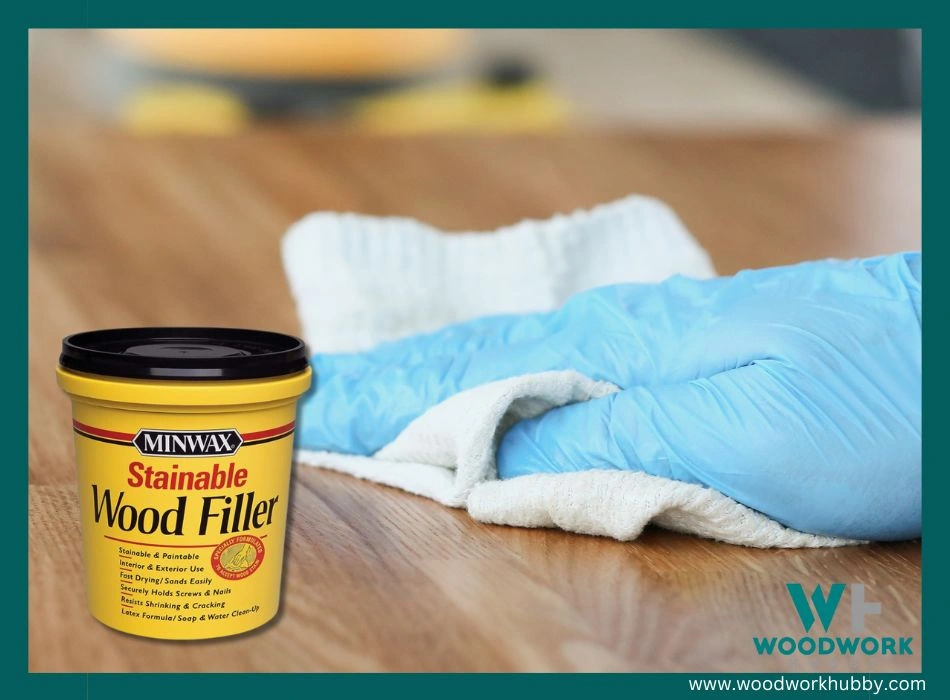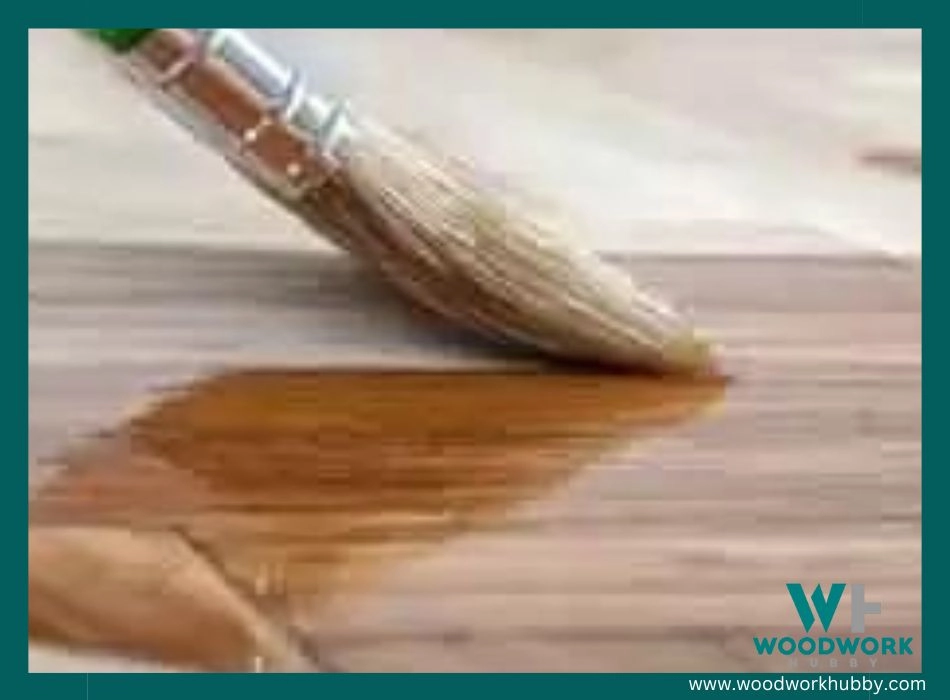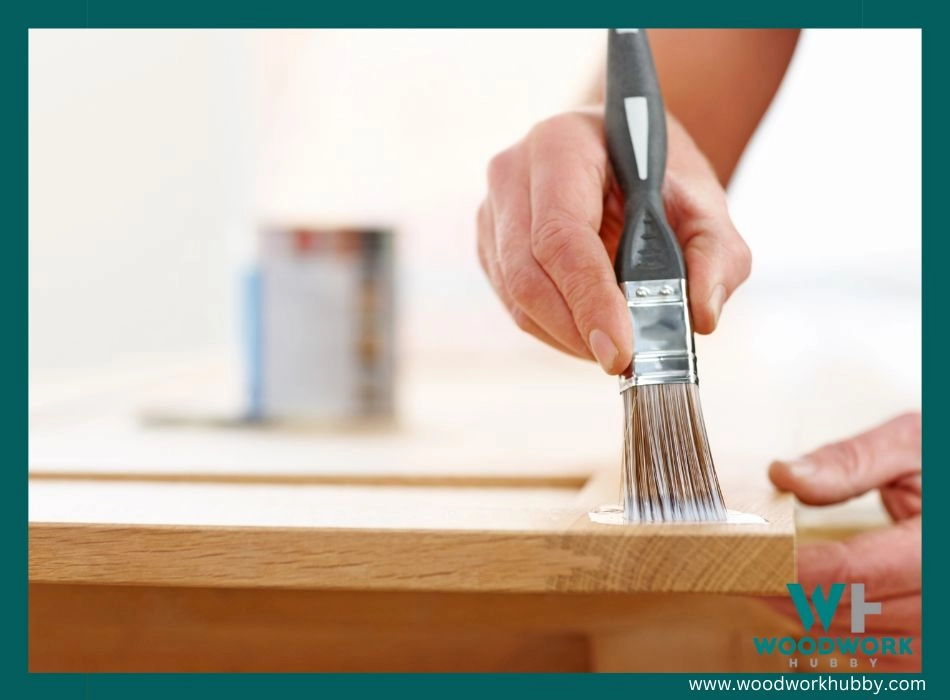If you’re looking for a way to update the look of your home, you may be considering staining your wood furniture or floors. Wood stain can be a great way to change the color of your wood and protect it from wear and tear. So the ultimate question is, can you use wood stain indoors? I will reveal my ultimate tips!
You can use wood stain indoors, provided the stain is suitable for indoors and you are working in a well-ventilated area with the windows and doors open. Most wood stains are suitable for indoor use.
In this blog post, I will discuss the types of wood stain that can be used indoors and the best ways to apply them.
How to Use Wood Stains Indoors
Two types of wood stains can be used indoors: water-based and oil-based. Water-based stains are typically easier to work with and clean up, but they may not provide as much protection as oil-based stains. Oil-based stains will need to be removed with a paint stripper, so be sure to follow the manufacturer’s instructions carefully.
Also, be sure to check out my article on; can interior wood stain be used outside. The results were interesting.

To apply a wood stain, follow the steps below:
Step 1: Ensure Proper Aeration
Introduce plenty of airflow into your work area. Create a workspace with lots of airflows. Run, fans, or open the windows. While working on your project, proper ventilation is provided via airflow. Avoid staining in overly hot or stagnant areas of your home.
Overly hot or stagnant areas will not allow for proper drying time and could result in a sticky or tacky finish.
Step 2: Select the Right Stain
Choose an indoor wood stain that is designed for the job you’re doing. For example, if you’re staining floors, select a floor-specific product. If you’re working on trim or cabinets, pick a product that is designed for use on those surfaces.
Step 3: Put on the Right Gear
To avoid staining your clothes or skin, be sure to wear gloves and old clothing that you don’t mind getting dirty.

Step 4: Prepare the Surface
Before applying the stain, sand the surface of the wood to create a smooth finish. Remove any existing finishes from the surface you’re working on. This may require sanding or stripping. Once the surface is prepped, clean it with mineral spirits to remove any dust or debris.
Step 5: Dust the Surface Properly

With a dust mop or cloth, thoroughly clean the surface, then check for any holes or cracks that require filling. Fill the holes appropriately with wood filler. Apply following the wood filler’s instructions, then allow to dry.
Step 6: Coat with a Pre-Stain Conditioner (Optional)
To ensure an even finish, apply a pre-stain conditioner to the surface. Apply a pre-stain conditioner to the wood’s surface. A pre-stain conditioner helps in removing blotchy regions on the wood and helps your stain spread evenly when you apply it.

Pre-stain the surface by dipping a paintbrush into it and coating the wood with a smooth, even stroke.
Continue until the surface is covered. Keep painting in a single direction. Do not flip-flop your paintbrush while applying the conditioner. With a clean, dry towel, remove any excess conditioner. Allow the conditioner to sit for the recommended period of time.
Step 7: Apply the Stain
Now it’s time to apply the stain. Pour a small amount of stain onto a clean rag or paintbrush. Starting in a corner, begin applying the stain to the wood, working in the grain direction.

Use long, even strokes, and don’t overwork the area. If you see any puddles of stain, remove them with a clean rag. Allow the stain to dry for the recommended amount of time.
Step 8: Wipe Off Excess Stain
After you have applied the stain, use a clean cloth to wipe off any excess. Allow the stain to dry completely according to the manufacturer’s instructions before applying a topcoat or sealer.
Step 9: Apply a Second Coat (Optional)
For a deeper color, you can apply a second coat of stain. Be sure to allow the first coat to dry completely before applying the second.
Step 10: Finish Up
After the stain has dried, you can apply a topcoat for extra protection. A topcoat also adds shine and makes cleaning easier. Apply a topcoat by following the manufacturer’s instructions. Once the topcoat is dry, your project is complete.
I compiled an easy Step-by-Step: How To Fix Too Much Stain On Wood! You should not miss this article!
Is It Safe to Use Wood Stain Indoors?
Using wood stain indoors is generally not safe unless you take proper precautions. Make sure to introduce plenty of airflow into your work area and use a product designed for indoor use.
The following risks are involved when applying wood stain indoors:
The Smell of the Stain
The fumes from wood stain can be strong and overwhelming. Make sure to work in a well-ventilated area near an open window or door. If possible, work outdoors.
The smell of the stain takes 2-3 days to wear off and can be dangerous to your respiratory health. It’s important to avoid inhaling the fumes.
I will teach you the ultimate Step-by-Step: How To Stain Wood To Be Lighter. Be sure to check it out!
The Dangers of Inhaling Wood Stain Fumes
When inhaled, the fumes from wood stain can cause dizziness, headaches, and nausea. In extreme cases, it can lead to respiratory problems and even death. If you are pregnant, elderly, or have a pre-existing condition, you are at an increased risk of adverse health effects.
Make sure to take plenty of breaks while working and open windows or doors for ventilation. If you start to feel dizzy or nauseous, stop working immediately and get some fresh air.
The Risk of Fire
Wood stain is flammable, so it’s important to take precautions when using it indoors. Keep any open flames, such as candles or cigarettes, away from your work area.
Do not leave the area until the stain is completely dry and the fumes have dissipated. It’s also important to keep children and pets away from the area while you’re working.
When is it Safe to Stain Wood Indoors?
It is safe to stain wood indoors if you use water-based products and take proper precautions. Water-based wood stain stink less than oil-based products and are less flammable.
Oil-based wood stains are more difficult to work with and have a strong smell. They are also flammable, so it’s important to take extra precautions when using them indoors. If possible, it’s best to stain wood outdoors.
Make sure to work in a well-ventilated area and take plenty of breaks. Wear gloves and old clothing, and be sure to wash your hands thoroughly when you’re finished. You can also wear a mask to avoid inhaling the fumes.
If you must use an oil-based product indoors, make sure to open windows and doors for ventilation. Work in a well-ventilated area and take breaks often.
Check out my article on whether You Should Sand Wood After Staining? Here’s the solution I found!
Can Turpentine Be Used to Remove Stain?
Turpentine can be used to remove wood stain from your skin or clothes. However, it is a strong solvent and can be harmful to your health if inhaled. It’s important to use turpentine in a well-ventilated area and avoid inhaling the fumes.
If you get a wood stain on your skin, saturate a cloth with turpentine and rub it on the stain. Be sure to wash your hands thoroughly when you’re finished.
To remove wood stains from clothes, saturate the stain with turpentine and blot it with a clean cloth. You may need to repeat this process several times. Once the stain is gone, wash the clothing in the washing machine.
Does Turpentine Remove Wood Varnish?
Turpentine can also be used to remove wood varnish. However, it serves just to soften the wood’s varnish so you can wipe it away. It will not completely remove the varnish.
To remove wood varnish with turpentine, saturate a cloth with turpentine and rub it on the stain. Be sure to wash your hands thoroughly when you’re finished.
You can also use a paint stripper to remove wood varnish. Paint strippers are chemical solutions that can be harmful to your health if inhaled.
Paint strippers will remove wood varnish and paint in one step. Apply the stripper to the surface with a brush and let it sit for several minutes. The varnish will soften and can then be scraped away. Be sure to wear gloves and a mask when using a paint stripper.
What Removes Stain from Wood?
Wood stain removers are designed to remove wood stain from surfaces. There are two types of wood stain removers: solvent-based and water-based.
Solvent-based wood stain removers are made with chemicals that can be harmful to your health if inhaled. They are also flammable, so it’s important to take extra precautions when using them.
Water-based wood stain removers are less harmful to your health and are not flammable. However, they may not be as effective as solvent-based products.
The wood stain remover is toxic and dangerous. A face mask, goggles, and gloves are required. The fumes from the remover are strong, so if you’re working indoors, make sure the space is well-ventilated.
Apply the remover to the wood surface as directed by the manufacturer. When the surface begins to bubble, that’s when it’s time to wipe the stain remover away with a clean towel.
Some of the best wood stain removers include:
These are some of the best ways to remove wood stain from your surfaces. Be sure to take extra precautions when using any of these products, and always follow the manufacturer’s instructions.
How To Remove Water Stain from Wood
Water stains are common on wood surfaces. The best way to remove a water stain from wood into use a mixture of vinegar and olive oil.
To remove a water stain from wood, mix equal parts vinegar and olive oil. Apply the mixture to the stain with a clean cloth and rub it in.
Let the mixture sit for several minutes before wiping it away with a clean towel. The water stain should be gone. If it’s not, you may need to repeat the process.
Can You Use Paint Thinner to Remove Stain from Wood?
A paint thinner can be used to remove wood stains from your skin or clothes. However, it is a strong solvent and can be harmful to your health if inhaled. It’s important to use paint thinner in a well-ventilated area and avoid inhaling the fumes.
To remove stain using paint thinner, you need to soak a clean cloth in a bowl with the paint thinner and then apply it to the affected area. After a few minutes have passed, use another clean cloth to remove any excess paint thinner.
What You Should Consider When Buying a Wood Stain Remover
Safety is the number one priority when it comes to choosing a wood stain remover. Make sure to read the labels carefully and choose a product that is right for your needs.
You also need to consider:
Strength
You should also consider the strength of the wood stain remover. Some products are designed for heavy-duty use, while others are more gentle and can be used on delicate surfaces.
Ease of Use
Removing stains is not supposed to be a difficult task. Choose a wood stain remover that is easy to use and will not require you to put in too much effort.
Price
Wood stain removers vary in price, so you should choose one that fits your budget. However, remember that the most expensive product is not necessarily the best.
Final Thoughts – Can You Use Wood Stain Indoors? My Tips Revealed
You can use wood stain indoors. However, it can be dangerous if you don’t take proper precautions. Make sure to work in a well-ventilated area and wear gloves, old clothing, and a mask to avoid inhaling the fumes.
If possible, it’s best to stain wood outdoors. However, if you must use it indoors, follow the manufacturer’s instructions carefully and take all safety precautions. I hope this article was helpful.









